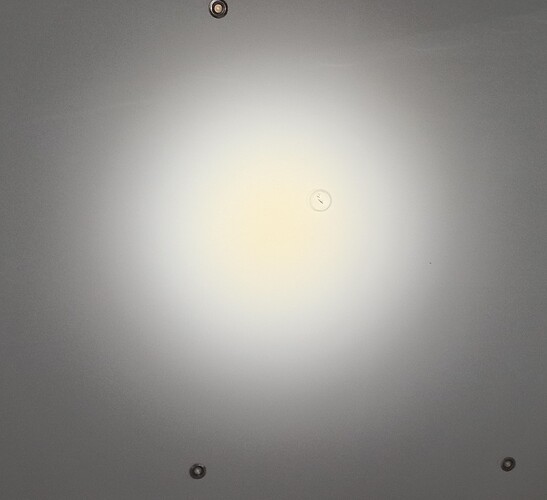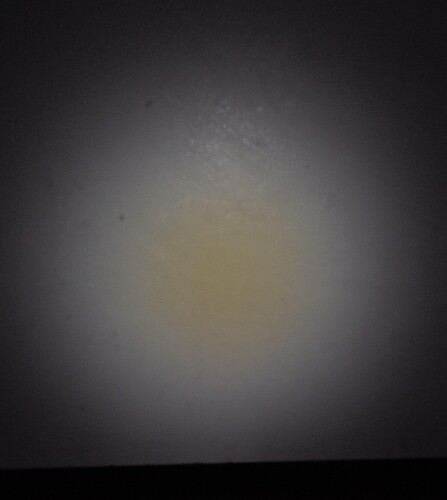2024-02-18
On July 18, 2023, the XP-G4 was introduced as the fourth generation of the XP family from Cree. After the very popular XP-G2 and the XP-G3, which is already several years old, it is the latest model in the XP-G family. In particular, Cree is advertising the increased maximum current of 3 A and the improved optical profile relative to the vertical viewing axis as well as general color stability across the entire beam angle.
This emitter was purchased on Kaidomain. It was provided by german flashlight forum user @Palladin, many thanks for this!
Please keep in mind that this test only covers the XP-G4 with dome (sometimes these variants are called ‘high density’ although Cree never called the XP-G4 with dome like this). For the upcoming XP-G4 HI variant without dome I will conduct a test if samples are available.
Tj 85 °C, If 700 mA
- Type: single die, flip chip
- Bin: B4 (min. 280 lm)
- Color group: 2B (5700 K)
- CRI: min 90, R9 min 50
- Rated voltage: typ. 2.8 V - max 3.3 V
- Max. Forward current: 3,000 mA
- Max. Peak current: — mA
- Viewing angle: 120 °
- Thermal resistance: 1.3 K/W
- Max. Temperature Tj: max. 150 °C
Datasheet can be downloaded here: Datasheet (newest version, Cree)
In general, the design of the XP-G4 corresponds to that of its predecessor. Two things in particular are noticeable here: the general design is more orange instead of yellow, and the illuminated area is hardly directly recognizable, although this is likely to be different for LEDs with a low CRI or different CCT. There is also no obvious marking for the anode/cathode and no frame as with the XP-G3.
Design-wise, it is one of the most simple and elegant LEDs ever released. When viewed from the side, the slight wave shape of the white silicone below the dome corresponds to the design of the XP-P (test here).
The symmetrical XP footprint (3535) allows the use of rotated centering aids and other accessories. Depending on the reflector used, it may be necessary to pay attention to the different heights of the centering aids.
The footprint is in the typical 3535 (XP) format and has no special features. The edge in the thermal pad indicates the anode. Such significant reductions in the heat dissipation surfaces should be viewed critically; they further reduce heat dissipation, which is already severely limited, especially in the compact 3535 format.



The LES is similar to that of other emitters such as HL2X or 519A. There are no bonding wires; as with most modern emitters, the LED chip is manufactured using flip chip technology.
However, a strong coloration of the edges is noticeable here; there is a strong bluish shimmer at the edges, which indicates an irregular application of phosphor. This is likely to have an impact on the optical properties in conjunction with reflectors/lenses. This effect was already present before the high-performance test was conducted.

The luminous area is 4.61 mm² in size. As the LED chip also emits small amounts of light from the side, the total size of the LES can be larger, which reduces the luminance.

Dedoming is not easily possible. The dome cannot be removed with a fingernail, the phosphor is also removed. The latter was not the case with the fingernail dedoming of the XM-L2 new gen, so it is highly likely that a different internal structure of the LED comes into play here. This should also apply to chemical dedoming with thinner or acetone. Only shaving (cutting the dome directly above the LED chip) could be a solution for the XP-G4, but I didn’t tested this yet.
If an LED without dome in XP format is required, I recommend either the Cree XP-P (which is available in many different CCTs and CRIs) or other LEDs from Osram or a dimmed 519A if high light quality is required.

Within official parameters, as far as known:
- at 3,000 mA (official maximum current): 1030 lm @ 3.29 V
- Power at official maximum: 9.9 W
- Efficiency at 3,000 mA: 104.4 lm/W
- Maximum reached at 10.2 A, at this point 1844 lm @ 4.01 V
- Power at maximum 40.9 W
- Efficiency at maximum 45.0 lm/W

The performance at official specs is within the expected range, the binning is adhered to. The Vf is within the normal range. The XP-G4 is therefore classified as a 10 W LED by the manufacturer.
Despite the nominally higher thermal resistance compared to the XP-G3, the performance is very good. The very high forward voltage for a flip chip LED can be problematic here, especially if only linear regulated drivers are used.
At least the sample tested here can in principle be used in direct drive (connection of the LED directly to the battery, without intermediate driver electronics), although this is only recommended for commercially available 18650 or smaller batteries. In the case of 21700s with a particularly good voltage range (e.g. Samsung INR21700-40T), there is a risk of overcurrent and thus premature failure or ageing.
In the comparison it is very interesting to see the XP-G4 with the XP-G3 tested a few years ago. Despite the high color rendering, the XP-G4 is almost as efficient as the XP-G3 in 70 CRI classification. In general, the XP-G4 is a very efficient LED, especially compared to the Nichia 519A, whereby the latter traditionally focuses on particularly high-quality light quality and efficiency is not a priority.
The Vf is also significantly lower, although the 519A clearly shows how it can do even better. The difference in thermal resistance is particularly evident here: the Lumileds HL2X is far behind and only achieves a maximum of 5.6 amps, although the general efficiency of the HL2X is in the range of the 519A or even exceeds it.

Data for 25 °C Tsp (at 85 °C the luminance values are around 13 % lower).
The luminance reveals no surprise and is similar to that of the XP-G3. Due to the huge illuminated area and the sideways emitted light, the luminance of the 519A is very low, which is also the case with the XP-L2.

The beam pattern is… interesting. The actually sharply defined spot has a strong tintshift. A colder (bluish) edge is filled with a yellowish-orange area. The corona and the spill, on the other hand, are free of color distortions. This effect is presumably caused by the color deviations already observed on the LES.
This color distortion is also visible on non-white surfaces, although the visibility in outdoor applications with many different surfaces and different depths should be relativized. However, the XP-G4 in reflectors and lenses is therefore not recommended without restriction, at least not this sample from this batch or this CCT/CRI. This effect occurred on both LED samples I got.
Although Cree specifies a CRI of at least 90, the sample tested here does not achieve this, although the measured CRI of 88 still remains within the permitted range, as Cree specifies a tolerance of +/- 2 CRI on its measurements/binnings in his datasheets. The R9, on the other hand, just reaches the minimum value specified by Cree at 50.
I consider the strong green tint and the distinct lack of red in the 620 to 660 nm range to be particularly problematic in the spectrum, although this greatly increases the efficiency, which is essential for classification in the highest possible binning B4. The spectra of XP-G4 and 519A are basically quite similar, except that the red component of XP-G4 is significantly lower. The spectrum of the XP-G4 is more similar to that of the HL2X 5700 K 90CRI, although the blue peak of the latter is at 440 nm instead of 450 nm and the green and red components are even higher up to 620 nm.
The tint is greenish, and out of ANSI range. For illuminating white or smooth surfaces, this tint is annoying. In nature this might be tolerable, depending on own preferences. For this application there are much better alternatives with color localization close to or below the BBL.
- Ra: 88
- R9: 50
- CCT: 6196 K
- duv: 0.0097
The XP-G4 is a logical further development of the XP-G3. The maximum current is higher, the efficiency has been significantly improved and the optical properties have also been significantly improved in at least one area - color distortion in the spill.
However, the disadvantages are the high Vf and the strange discoloration in the spot, which is mainly due to the phosphor or the luminous surface and may turn out differently with other samples. In addition, the tint is visible greenish (which can be very annoying even with mixing the light) and the color rendering values of Cree are only just met.
It should be noted that the findings observed here may be different for LEDs from later batches or other binnings/color groupings.
Pro
- high efficiency
- good potential for overcurrent
- attractive price point
Neutral
- Marking in the thermal pad, resulting in a reduction of the heat dissipation area
- Dedoming not easily possible
Contra
- greenish tint (this sample)
- Color distortions in the spot
- high Vf for LEDs in flip chip design, especially with high current supply
Thank you for reading the test. ![]()

